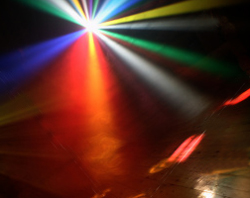
Analog delay devices also gained popularity by eliminating the tape. These devices use a simple “bucket brigade” technique – the signal is stored very briefly in an analog “memory” and then released.
By chaining several of these memories together, the signal can be held for quite a while.
And by providing different points at which to “tap” the chain, a more complex output signal can be achieved. Many of these devices sound quite good and can still be found in use today. The major drawbacks are increased noise and limited bandwidth.
Marching Onward
Believe it or not, but digital effects processors were introduced way back in the mid 1970s, and although these offered simple operation and a unique sound, they were still priced high at $7,000 to $12,000.
As computer technology has marched onward, excellent quality devices that rival and supersede those early ones can be had for a fraction of the price.
The limiting factor on many of the early digital units was bandwidth, going only go as high as 10 kHz to 12 kHz.
Of course, the argument is that natural reverb rarely contains frequencies above those limits due to the natural friction of air, which dissipates the higher frequencies.
Still, the desire lurks inside of every engineer to create some rather extraterrestrial effect, and advances have been made to increase that bandwidth.
Another limiting factor was that sound was often “grainy” – one could easily hear the “stepped” sound of the digital conversion. Again, advancements have been made in sampling rate and smoothing techniques.
Shape & Define
Quite literally, when mixing an album I imagine a place where this performance is taking place, and then use the effects processors to help shape or define that place.
Similarly, doing a sound reinforcement mix (to me, at least) is really just mixing the album in front of an audience instead of in a small control room.
As long as the room is large enough and relatively well behaved acoustically, I approach the use of digital effects processors in exactly the same way as during a mix-down session.
The secret to tasteful use of effects is to listen very closely to your favorite recordings.
Carefully analyze what you hear, and then try to emulate it.
And remember – a little bit of effects can go a long way. Don’t overdo it!
Curt Taipale of Taipale Media Systems heads up Church Soundcheck.com, a thriving community dedicated to helping technical worship personnel, as well as the Church Sound Boot Camp series of educational classes held regularly throughout the U.S.
